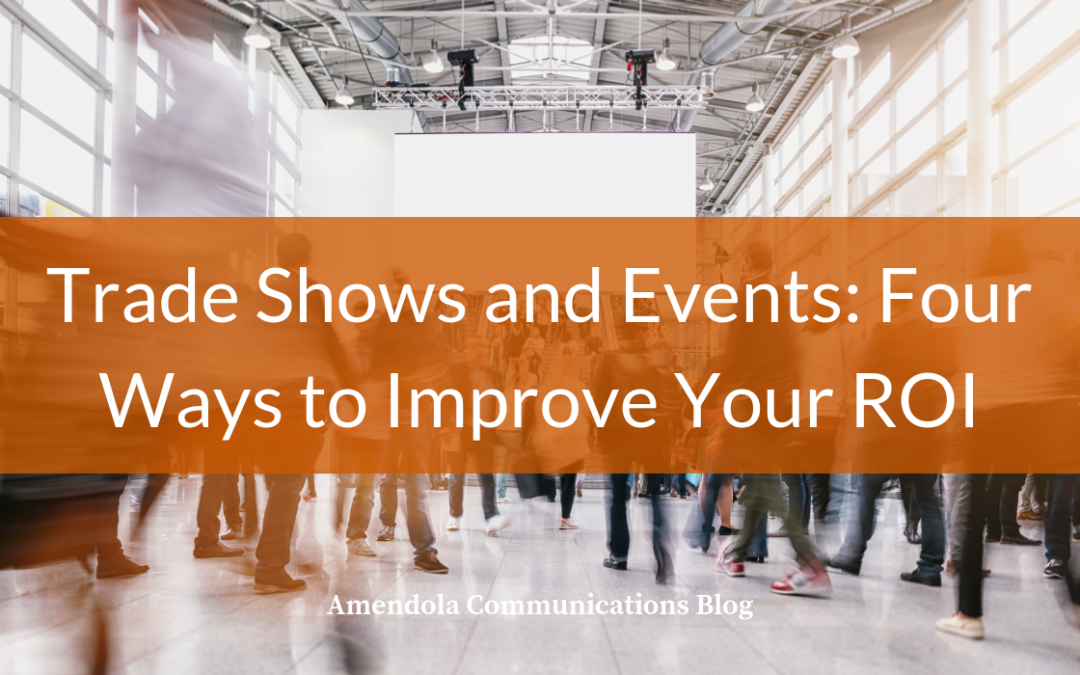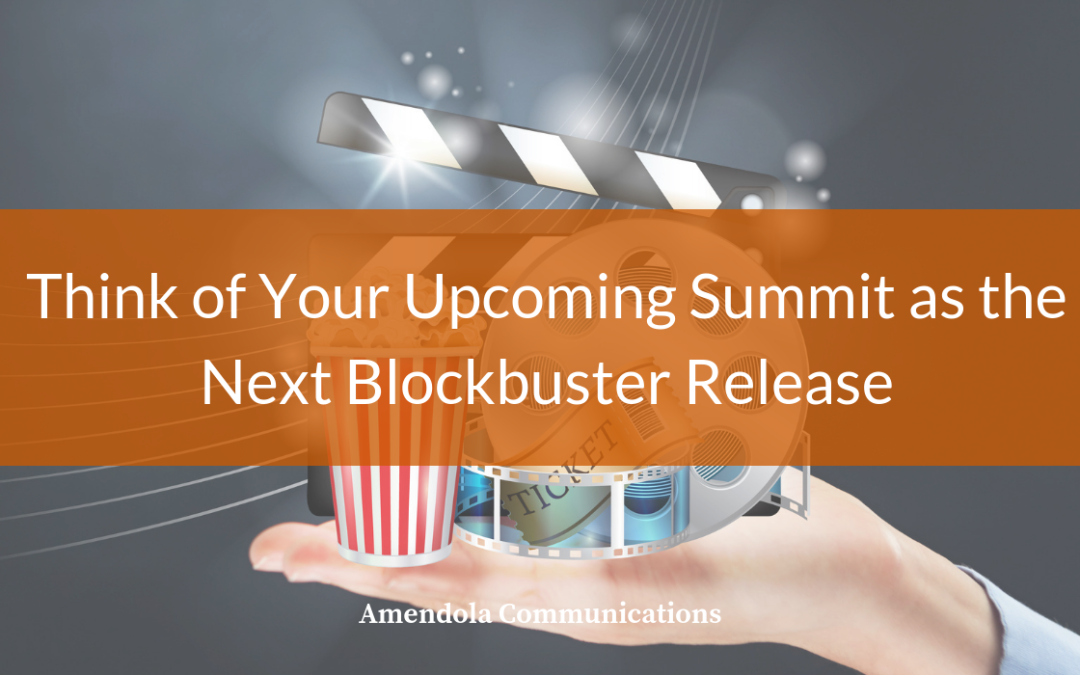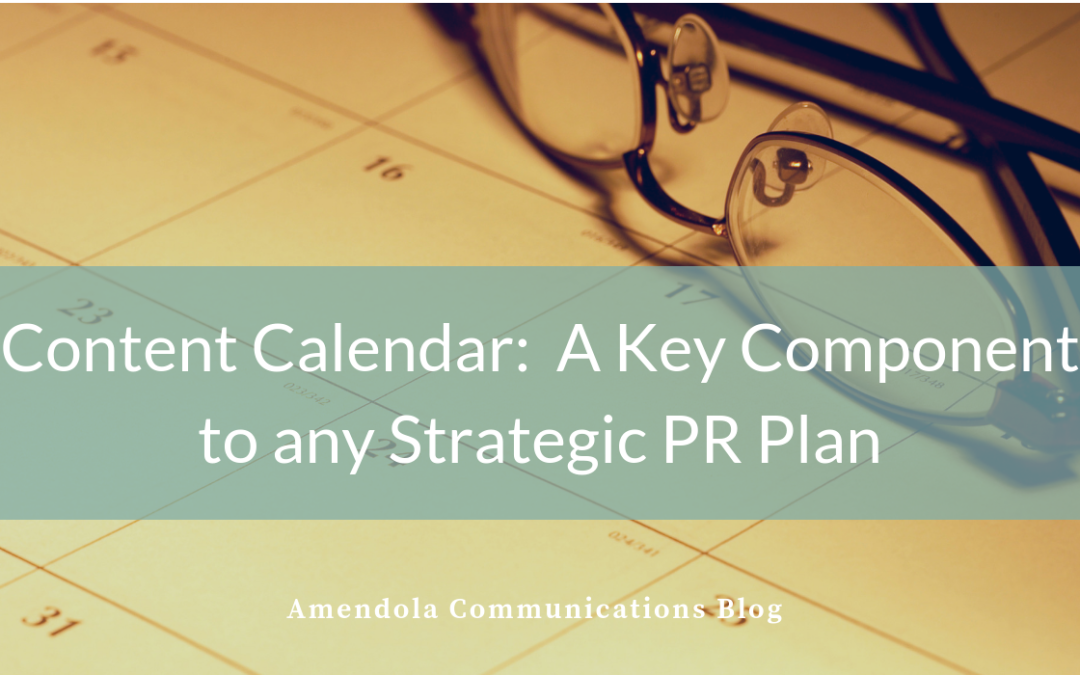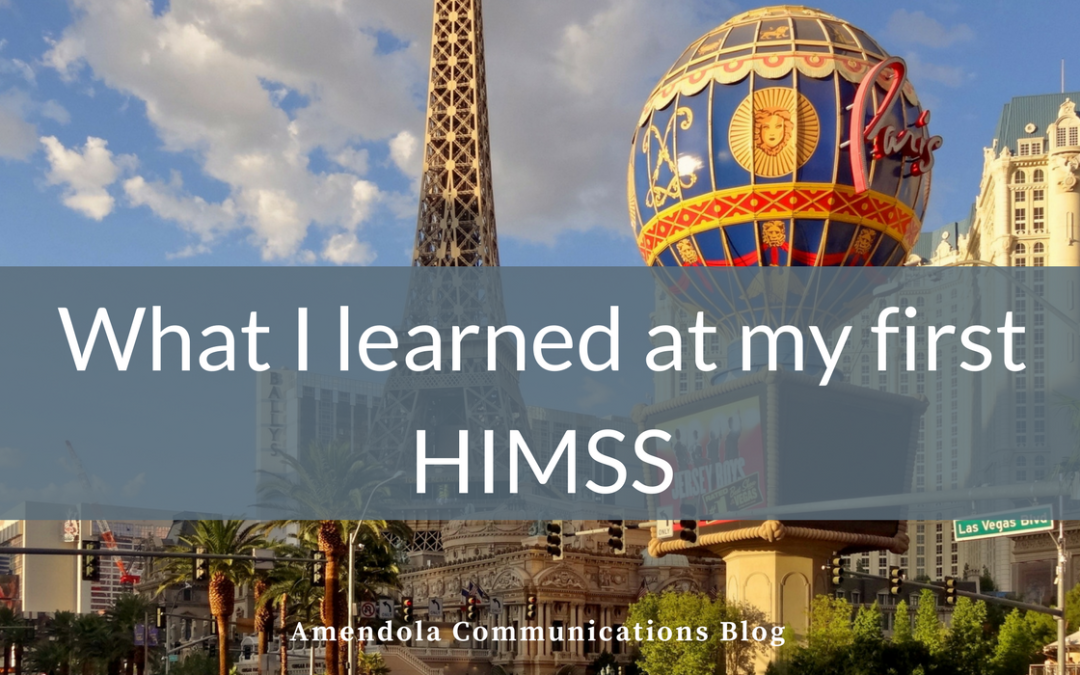
by Kim Mohr | Feb 8, 2024 | Blog
Heading to
ViVE 2024 in Los Angeles or
HIMSS24 in Orlando? These key industry trade shows aren’t just a chance to escape the winter weather for warmer destinations! They can present a great opportunity for executives to establish relationships with journalists from a variety of publications and mediums.
Chances are if you’ve landed an interview, it’s for a brief window, so read on for best practices for making the most of your time.
Most journalists attending trade shows start to populate their calendars weeks, if not months, in advance – which is why many PR pros also start early to secure interviews for key subject matter experts. It’s important for companies to identify which trade shows they will be attending as well as key personnel well ahead of the show. This can be done as part of an annual marketing plan. An added benefit to planning early is that some shows offer early bird registration, so you may even get a deal to attend.
If you’re offered an interview, make sure you have basic knowledge of the outlet, the topics it covers, and their target audience. You’ll want to frame your responses in a way that’s relevant to readers of the publication.
For example, if the outlet targets members of the C-Suite, big-picture, high-level strategic responses are appropriate. If readers or listeners are clinicians, you’ll want to address clinical or patient benefits of your technology. You can’t tailor your answers if you haven’t researched the outlet. Additionally, reporters appreciate it when you reference past stories they’ve done on the topic at hand. This shows that the relationship is a two-way street and further establishes that you aren’t only interested in talking about your company – and are dialed in on relevant conversations and coverage of key issues in the industry.
The show floors at ViVE and HIMSS are a maze of vendors, sponsors, analysts, media and more. Be sure you keep and use the map you get at check-in. Confirm your meeting location. Is there a designated media meeting area? Will the reporter be stopping by your booth?
Find out and arrive early for the interview. Set an alarm in your phone to remind you of the meeting, just in case you get caught up talking to a client, prospect or colleague. With only a few minutes for each interview, if you’re late, you might miss out depending on the reporter’s schedule. We’ve seen this happen many times. While many journalists will graciously offer to connect another time, the odds of it happening in a timely manner are understandably slim, as journalists are just as busy in the days immediately following a show as they are while they are onsite.
There’s nothing worse for PR professionals than sitting through a client interview where the interviewee rehashes old news or espouses cliches. If you want to stand out in the crowd, have something to say. Everyone knows that “innovation is key” and “AI is the future.” But how is your company disrupting your space? How does this benefit patients, clinicians and others in the healthcare ecosystem? Where do you see the industry going and how are you helping to get there? What are you doing that’s different than the other guy?
Clearly defining your differentiators (without directly referencing the competition) and outlining talking points ahead of time are key for a successful interview. For extra credit, have a colleague or your PR team do a mock interview in which you can practice steering likely questions to your talking points. And remember, if you don’t know the answer to a question, it’s perfectly acceptable to say you will follow up. Don’t try to answer what you don’t know.
Pro tip: Shows such as ViVE offer the opportunity to share news in a group distribution to media attending the event. This is an extra opportunity for you to get your message in front of journalists who will be there. While you may not get an interview out of it, your news could be included in a roundup during the show or in a post-event wrap-up.
Remember that every meeting does not yield immediate coverage. However, we have repeatedly seen “meet and greets” at trade shows turn into follow-up, in-depth interviews or coverage that seems to be out of the blue months later. The main goal of these trade show meetings is to meet key journalists, introduce them to your company and technology, and explain why you are making a difference in the healthcare scene.
- Give them something to remember you by
Have you done a recent study, survey or analysis? An eye-catching infographic with meaningful information and guidance (URL or QR code) on where to learn more can be something that sets you apart from others. However, don’t give journalists run-of-the-mill marketing collateral. Anything you leave behind should have a news peg and not simply be self-serving information about the company.
This may be the most important tip of all. While you shouldn’t be overly casual and should always keep in mind that nothing is ever really “off the record,” you do want to establish a rapport with the reporter. Interviews don’t need to be buttoned up and extremely formal. Use a conversational tone and avoid jargon whenever possible.
Best of luck with all your trade show media opportunities!
For more tips on getting the most from trade shows, check out these tips.

by Ken Krause | Jun 12, 2019 | Blog
Whether you personally believe trade shows are the land of opportunity or merely a relic of a bygone era where primitive being skulked through the aisles without the benefit of a smartphone, there is no question that they are still a fact of life for many of us. In fact, some (such as, oh, I dunno, HIMSS?) are not merely a minor blip on our radars but a huge disruptor to the otherwise semi-orderly flow of our lives.
Trade shows can be a time-sink as well as a budget-sink, so if you’re going to make that type of investment, it’s critically important that you be sure the organization gets something out of it. Something more than “exposure” and free leftover pens, tote bags and the kind of hard candy your grandmother gives you when you come to visit, and that you only eat when there is absolutely no other choice. Love you, grandma!
Toward that end (getting something out of your trade show investment, not getting hard candy), Amendola Communications CEO Jodi Amendola has written a blog post in her role as a member of the Forbes Agency Council. “Trade Show ROI: Four Ways to Make the Most Out of Industry Events” offers some great suggestions for ensuring marketers get a pat on the back rather than a kick in the backside for the results of their organization’s trade show efforts. The four tips include:
- Ensuring you have a well-honed elevator pitch that carefully walks the line between proper and over-the-top self-promotion
- Making Twitter your go-to social media platform for engaging other attendees
- Hosting a reception for clients and prospects
- Being sure you do something with all those leads you capture
Obviously there’s more to it than just those four bullet points, so it’s well worth giving the post a full read. You can do that here.
Whatever your personal feelings about trade shows, however, they still loom large in many industries – especially healthcare. So if you’re going to do it, do it right.
Take the time to prepare properly, and then maximize your time on the floor – whether you’re in front of the counter or behind it. It will pay off in the end.

by Chris Currington | Apr 17, 2019 | Blog
You’ve invested substantially in your upcoming trade shows, congresses, conferences or summits (collectively referred to as “summits” in this blog piece). Speaker submission forms. Sponsorships. Booth-install, technology and set-up. Videos. Meeting spaces. Air fare. Hotel blocks. Meals and entertainment. Just to name a few of the common and worthwhile expenses.
But, how do you make your speakers stand out from the others? How will you pique interest and draw attendance? How can you show target audiences the value in your solution and engage with them?
Think about your upcoming summit as if you were bringing a new movie to theaters building anticipation and excitement for your specific offering, making sure your audience gets an entertaining learning experience and then at the end leave them wanting more.
1. Coming Soon! (Build Anticipation)
You should begin preparing months in advance of the summit. If possible, make sure the save-the-date goes out to key audiences (including internal sales and marketing teams) during the previous year’s summit. If that isn’t possible, then send out the save-the-date as soon as your appearance at a summit or a speaking opportunity is secured.
During the months leading up to it, create talk tracks for sales and account teams to help drive attendance to the summit. Talking points can also be used in emails to clients, customers and prospects. Develop landing pages and digital flyers with information about the summit and speaker.
Something to keep in mind is, if you’re securing speaking sessions or educational forums, make sure they offer continuing education credits. This helps to build interest in your key audiences and leads to better attendance.
As the show draws closer, supply your sales and account teams with social media posts that they can easily post and share. These take only minutes to compose and can be a simple push to their Twitter, LinkedIn and Instagram accounts.
2. Showtime! (Creating a Meaningful Experience)
From the time the summit opens, you should be taking advantage of opportunities to engage your appropriate audiences. There are various media and formats to create a dialogue and draw attention to your company and solution offering.
If it’s allowed, during keynotes and other speeches, you could consider live-streaming them for your customers, clients and prospects who are unable to attend. This is also a great way to create a “pull” and desire to attend the show in the future.
For social media, make sure that you have an ambassador who is taking pictures and writing recaps of sessions that link to next year’s save-the-date for the show. Include something in the social post like, “Reserve your spot NOW for next year’s summit!”
If you have clients on-site, help them share their stories through testimonials. You can also have a videographer, who is visible to other attendees, grabbing people in the hallway or aisles and asking them about their conference experience, what they’ve learned and their most important takeaways. This is an excellent way to create buzz and get people talking. It also provides content for a recap video to promote future conferences and can be an amazing tool for digital campaigns.
Be sure to have a booth or pop-up in the vendor display area. In addition to having a space to demonstrate your solution, this gives you a meeting area for clients to discuss their successes and prospects to ask questions and sign up to learn more. And, make sure that sales and account management teams are taking notes so they can conduct proper follow-up opportunities. To keep attendees engaged and returning to your booth, consider some sort of raffle or giveaway.
If you have speakers and clients presenting, create polls during the sessions. This gives another chance to engage the audience and gives you statistics and material to post on social media. Build in an appropriate time for questions and answers those, too, can be posted on social channels. For future material, assign writers to record the sessions and create bylines or post-session articles to add to your marketing content pipeline for months to come.
3. Now Streaming! (Post Show Tactics and After Effects)
As soon as the show ends, issue a press release with a recap of any important announcements, how many people attended, a list of organizations that attended (if it’s impressive) and any awards that may have been given to your customers or clients. Be sure to include client quotes”¦especially those related to your product or solution.
Create a virtual summit, in a webinar format, with a series of the best sessions. You may need to fill out forms and work with the show’s continuing education people, but it may be possible to offer continuing education for the virtual summit as well.
For those who attended the summit, consider creating a gated microsite, with links to all materials from the show’s sessions, and a link to the next year’s save-the-date. You can also include links to the virtual summit schedule, registrations and the media recap session that was produced during the show (or post-show) as well.
Finally, email your target list to keep them engaged! Develop a cadence of one-a-month, with key takeaways, follow up materials and calls to action.
To get the most from the investment you’ve made in summits, have a strategy and devote the time to plan, execute and follow-up. Remember that the latest big blockbuster movie had many resources devoted to its preparation and release, as well as continuing its popularity after it left theaters. With the tactics in this blog, hopefully you, too, will have a summit that’s a hit for a long time to follow and attracts audiences to many sequels.

by Linda Healan | Oct 31, 2018 | Blog
Oftentimes public relations professionals think of content calendars as a tool for marketing communications programs. Having an internal editorial calendar is absolutely important for any content program. Since an integrated public relations campaign has evolved from just media relations, PR pros should also consider a content calendar as part of their overall strategic PR plan.
Knowing your audience(s) is one of the primary tenants of public relations, and the purpose of any good content is to engage, educate and encourage action. Therefore, it is necessary for us to identify those people who really are influential and approach them through high-quality content rather than corporate or product blurbs.
It is also essential to make sure that a content calendar is developed based on your overall marketing goals. What do you want to accomplish this year? What new products will be announced? Are you a start-up just entering the market or are you positioning for an IPO, other investments or hoping for an exit strategy? Positioning your executives as subject matter experts and/or thought leaders is always a good strategy in any PR Plan.
So, what should be incorporated into a public relations content calendar to reach appropriate audiences and support marketing objectives?
Events
Events are one of the best opportunities to make your public relations strategy successful, whether it is through external trade shows such as HIMSS or other health/medical conferences or internal events such as webinars and user groups. Listing upcoming events in your content calendar allows you to develop content that strategically targets potential buyers as well as current customers, and position executives and thought leaders, all based on the timeline for the events. You can tie press releases and customer case studies to events, announce executive speakers or even blog about your giveaways at a trade show.
Press Releases
A well accepted strategy in PR is to average one press release every month. This allows you to keep your name and messaging top of mind and fresh with reporters. Scheduling your press releases in advance of industry events and around product launches helps your PR team coordinate with your marketing team to make sure the news is ready to be disseminated at the right time.
Articles/Case Studies
Thought leadership articles and case studies are excellent tools in the arsenal of any PR professional to demonstrate your knowledge and experience. Planning to develop these types of articles in your content calendar and then pitching for placement in key media outlets is the kind of valuable coverage many organizations desire. Compare the articles you plan to develop to the next category editorial opportunity calendars and you’ve got a head start on content that can be published.
Editorial Opportunity Calendars
Years ago, editorial opportunity calendars were the bread and butter in any PR campaign. With the move towards online media, many publications no longer publish or adhere to editorial calendars. But some still do and researching those calendars and adding key opportunities to your PR content calendar allows you to develop content in a timely basis to pitch to those media outlets. Make sure, however, that you build in lead times into your calendar. Another benefit to editorial calendars is they give you an idea of what topics the media is interested in covering and can help you develop a list of content ideas for the year.
Other categories that can be included in an integrated PR content calendar are blogs, customer newsletters and social media outreach. There are plenty of free tools on the web that you can use to develop a content calendar.
In the end, it all works together. Having a calendar of events, press releases and editorial opportunities allows a public relations professional to strategically plan to develop content that meets deadlines, achieves marketing goals and engages, educates and encourages action from your key audiences.

by Jenna Warner | Apr 18, 2018 | Blog
First and foremost, this is a BIG show. Okay, obviously this is a big show. But it’s important to understand this isn’t the type of trade show where the cool startup with hopes and dreams of changing the world can make a huge splash. At least, not without a plan.
As a first-time attendee, there were some confirmations and surprises that led to a few insights. Here are some tips to help kick-start your strategy for your first HIMSS.
Stop singing the same old song
Reporters are booked solid well before the conference begins and they are hearing “stories” all day. If it’s your first HIMSS, you may be surprised by the amount of similar ideas, products and solutions across the board. Let me tell you, the editors are not.
Whether it’s your first HIMSS or your 30th, make sure you have something to say. Passion plus results are rewarded in almost any industry and the same rings true in Healthcare IT. Don’t offer one without the other.
No one wants to hear about a product and all the technical aspects you have painstakingly perfected. They want to hear about what your solution is going to do for them (or their readers) now.
Don’t get it twisted. We are all very thankful for all the hard work, but the fact of the matter is there is too much going on to appreciate all of that hard work. Have something to say with weight.
Do your research before you go
Don’t waste time deciding what you’re going to do once you get to HIMSS. Everything moves too fast, and it takes too long to get from one place to the other. The conference may be several days long, but it goes by in a blink. Have a plan as an attendee or as an exhibitor.
Most of all, don’t make meetings with people that don’t make sense. Time, space and (good) coffee are precious luxuries at HIMSS. Don’t waste them.
Talk to people, and ask questions
Not just any questions – ask the one that you are hesitant about.
As a millennial, I think that we undervalue face-to-face interactions. There is something about being in front of people where you can get answers to questions you might not ask in a formal meeting setting or email. For one, they can’t just ignore your question.
Before all of my telehealth peeps give me a hard time – don’t worry, I still have no interest in physically stepping into my doctor’s office on a regular basis. Telemedicine rules!
A lot of flash doesn’t mean a lot of cash…flow
It was sad to see the booths with a premier spot just watch all the attendees walk by without giving their super cool mini golf game a try. Booth traffic success comes in layers, and although this conference was in Las Vegas, you can’t just take a shallow approach to entice the shrewd people of this trade show.
Take a note from the brilliant Lisa Chernikoff, “As savvy marketing professionals know, the best trade show marketing strategies start early and establish a regular cadence of communication.” Emphasis on start early. Your booth traffic strategy should not rely solely on a game of putt-putt. Meetings with a purpose, strategies that give attendees something they can use to fix their problems and well thought-out strategies for making conversation are what seem to be the keys to success at mega trade shows such as HIMSS.
The thought of tackling this type of huge trade show without a specialized agency and expecting results brings to mind a few analogies
- Scuba diving without a tank
- Planning a wedding for tomorrow
- Teaching a fish to ride a bicycle
- Baking a cake with cardboard appliances
And of course, the rumors are true – you will always be lost, hungry, searching for an outlet and totally amazed at what we are doing as an industry to improve healthcare. Now, I need to go buy some AirPods and avoid ever using or hearing the word leverage again.





